Today, the FIA introduced groundbreaking F1 models for 2026, promising enhanced competition and sustainability in the World Championship.
The International Automobile Federation (FIA) today unveiled a new F1 for a more competitive, safer, and sustainable future for the World Championship with the presentation of the highly anticipated technical regulations that will define the sport from 2026.
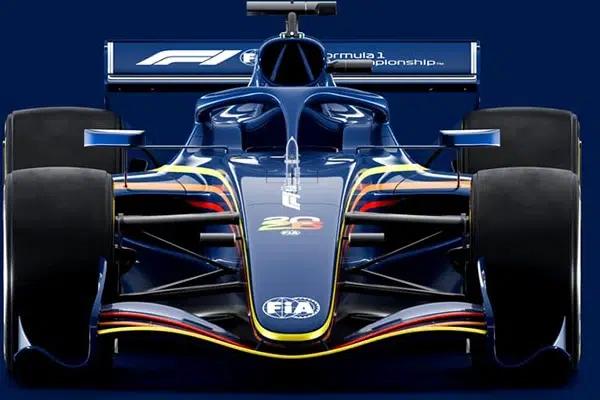
Developed in consultation with the FIA Formula One technical working groups and formulated in collaboration with Formula One, the sport’s 10 teams, equipment manufacturers, and power unit manufacturers, details of the new regulations were revealed in Montreal ahead of this weekend’s Canadian Grand Prix.
Models were displayed (see photos below) and key details shared.
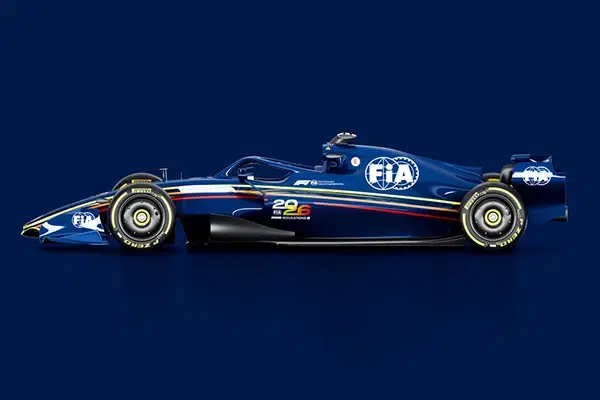
The 2026 regulations now need to be officially ratified by the World Motor Sport Council on June 28.
Key points include:
— The concept of an “agile car” at the heart of the 2026 technical regulation aims to enhance maneuverability and make races tighter
— The 2026 cars will be 30 kg lighter than the current generation F1 cars, improving efficiency and maneuverability
— The redesigned power unit relies on the world’s most efficient engines with nearly 300% more battery power and an equal distribution between internal combustion and electric energy
— Active aerodynamics to meet the energy management requirements of the new power units
— Increased overtaking opportunities through a new manual overtaking mode allowing for greater electric power deployment for the following car
— A record number of six power unit manufacturers with Ferrari, Mercedes, Alpine, Honda, Audi, and Red Bull Ford Powertrains committed to F1 from 2026
— The 2026 cars will operate on 100% sustainable fuel
— Enhanced safety through stronger structures and more rigorous testing
Statements:
Mohammed Ben Sulayem, President of the FIA
“Today, the FIA is setting an extremely exciting future for the pinnacle of motorsport with the launch of a comprehensive new set of regulations for the Formula One World Championship 2026 and beyond.”
“Following the publication of the 2026 power unit regulations two years ago, we seized the opportunity to redefine the chassis regulations to match the energy needs of the new power units. In collaboration with our Formula One partners and with the support of the sport’s 10 teams and all stakeholders, this represents a unique revision that will allow our premier championship to be even more relevant in relation to what is happening in the world.”
“The power unit regulations have already enabled a record number of engine manufacturers to commit to the sport. Now, in tandem with the chassis regulations that envision lighter, more agile cars with innovative aerodynamic solutions, we have created a set of regulations designed not only to enhance racing but also to make the championship even more appealing to engine manufacturers, carmakers, and existing competitors. The main features of the 2026 F1 regulations are cutting-edge technology, sustainability, and safety. Our goal, in collaboration with Formula 1, was to produce a car fit for the future of the elite tier of the sport. We believe we have achieved this goal.”
Stefano Domenicali, CEO of F1
“These regulations mark a significant moment for the future of our sport, as we look forward to a new generation of cars and engines that aim to provide our fans with closer and more exciting racing. The new sustainable fuel hybrid powertrain represents a huge opportunity for the global automotive industry, with the reduced fuel consumption potentially being used by cars worldwide and significantly reducing emissions. This potential is one of the main reasons why we will have a record number of engine manufacturers in Formula 1 in 2026.”
“We are entering this new regulatory cycle with the sport in the strongest position it has ever been, and I am confident that the work done by the FIA to create these regulations will further strengthen the sport’s position globally.”
Nikolas Tombazis, FIA Single-Seater Technical Director:
“With this set of regulations, the FIA sought to develop a new generation of cars that are perfectly aligned with the DNA of Formula 1—light, extremely fast, and agile cars that remain at the forefront of technology. At the heart of this vision is a redesigned power unit that presents a more balanced distribution between power derived from the internal combustion element and electrical energy.”
“In terms of the chassis, we have managed to reduce the size and weight of the car by 30 kg, making it a much more dynamic vehicle. Additionally, we are introducing two new exciting features to enhance racing: active aerodynamics, which allows for very low drag on the straights, and the Manual Override system, which allows drivers to benefit from a battery power boost on demand when they are close enough to the car ahead.”
“Lighter, more powerful, and more focused on the skills of the drivers, the FIA Formula 1 2026 technical regulation has been designed to provide tighter racing among drivers, increase competition among teams, and enhance the spectacle. Moreover, we have opted for a larger electric component in the power unit, a more efficient overall car, and entirely sustainable fuels, as part of our commitment to ensuring a more sustainable future for our sport.”
The comprehensive set of 2026 regulations propels Formula 1 into the future with key innovations in powertrain, chassis, aerodynamics, safety, and sustainability.
Powertrain
First published in August 2022, the powertrain regulations take a significant leap forward. Building on the foundation of the world’s most efficient hybrid engine currently used in Formula 1, the 2026 powertrain delivers even more power than current units.
While power from the internal combustion engine decreases from 550-560 kW to 400 kW, battery power massively increases from 120 kW to 350 kW, nearly a 300% increase in electric power. Performance is maintained while sustainability is further enhanced.
By simplifying the powertrain through the removal of the MGU-H and extending electric power, the 2026 power unit is the most socially relevant ever seen in Formula 1 and, together with 100% sustainable fuel, provides a cutting-edge platform for future road-transferable innovation.
Additionally, the amount of energy recoverable during braking is doubled, providing a total recoverable energy of 8.5 MJ per lap.
A Manual Override mode has been included to create better overtaking opportunities. While the deployment of a leading car will decrease after 290 km/h, reaching zero at 355 km/h, the following car benefits from the MGUK Override providing 350 kW up to 337 km/h and +0.5 MJ of additional energy.
Designed to attract new manufacturers to the sport, the regulation has led to commitments from existing suppliers such as Ferrari, Mercedes, and Alpine, the return of Honda as a manufacturer, and the arrival of Audi and Red Bull Ford Powertrains.
Chassis
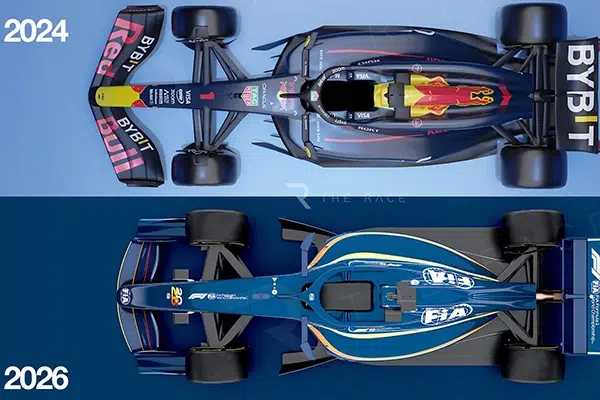
Designed to be smaller and lighter than the current generation of cars, the dimensions of F1 have been modified to adhere to the concept of an “agile car” at the heart of the new rules.
The wheelbase has been reduced from a maximum of 3600 mm to 3400 mm, while the width has been narrowed from 2000 mm to 1900 mm. The maximum floor width will be reduced by 150 mm.
Reducing weight has been a key goal and the 2026 cars will have a minimum weight of 768 kg, 30 kg less than their 2022 counterparts.
This weight is composed of 722 kg for the car and driver + 46 kg for the estimated mass of the tires. Downforce has been reduced by 30% and drag by 55%.
The 18-inch wheel size introduced in 2022 is retained, although the width of the front tires has been reduced by 25 mm and that of the rear tires by 30 mm, but with minimal loss of grip.
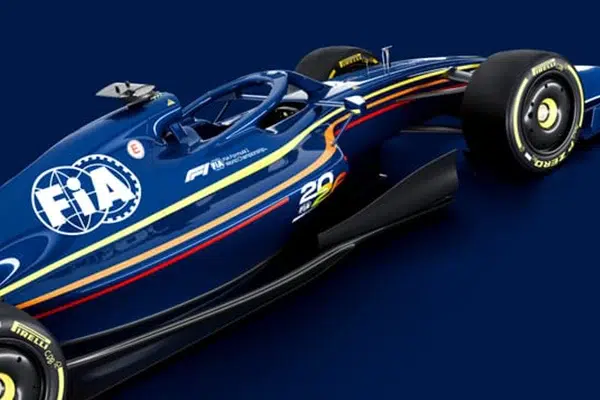
Aerodynamics
The 2026 cars will also benefit from all-new active aerodynamics systems. The system, which includes movable front and rear wings, will enable higher cornering speeds with standard Z mode deployed.
On straights, drivers can switch to X mode, a low-drag configuration designed to maximize straight-line speed. A three-element active rear wing will be adopted, while the lower wing has been removed and endplates have been simplified.
The front wing will be 100 mm narrower than currently and will feature a two-element active flap. Unlike current cars, front wheel arches will be removed, and part of the wheel fairing will be mandatory, to help achieve optimal wake performance.
Wake control panels for washing wheels will be placed at the front of the side pods to help control wheel wake. The cars will feature a partially flat floor and a less powerful diffuser, reducing ground effect and the cars’ reliance on ultra-rigid, low setups.
Safety
The Formula 1 2026 regulation confirms the rigor with which the FIA strives to ensure safety.
The revised front impact regulation introduces a two-stage structure to prevent incidents that have occurred in recent years, where the front impact structure (FIS) broke near the survival cell after an initial impact, leaving the car unprotected for a subsequent impact.
Side intrusion protection has been strengthened. The new specification offers better protection against intrusions around the cockpit and more than doubles the protection offered by the side of the fuel tank. Additionally, improved intrusion protection will be achieved without adding weight.
The loads of the safety roll hoop have been increased from 16G to 20G in accordance with other single-seater formulas, and the test loads have been increased from 141 kN to 167 kN.
Rear wing endplate lights will be homologated and significantly more visible/brighter than current lights. Side safety lights will be introduced to identify the ERS status of a car stopped across the track. The GPS antenna is repositioned to improve sensitivity and allow for future developments in active safety.
Sustainability
Starting in 2026, Formula 1 power units will operate with entirely sustainable fuel, underscoring the commitment to environmentally friendly racing and setting a new standard for motorsport.
This fuel will be “drop-in,” meaning it can be used in nearly all
internal combustion engine vehicles, offering a potentially revolutionary solution to greenhouse gases in the transport sector. By 2030, 1.2 billion internal combustion engine cars will be on the world’s roads, and the fuel developed for Formula 1 could be used to reduce emissions on an industrial scale.
Sustainability will be enhanced by increased use of electric power in the 2026 power units and a transition to a 50% electric and 50% thermal energy distribution.
The 2026 regulation aligns with the FIA’s goal of achieving net zero carbon by 2030.
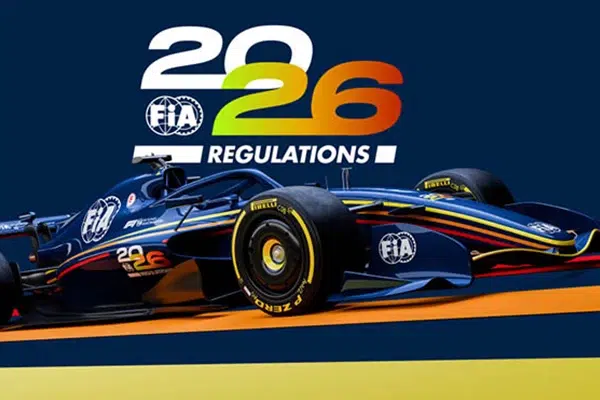
2026 F1 Update: Agile Cars Set to Boost Races. 2026 F1 Update: Agile Cars Set to Boost Races. formula 1 2026 F1 Update: Agile Cars Set to Boost Races
- You may also like>Gasly Optimistic as A524 Improves, Montreal Tests Ahead
- Following us on Facebook and Twitter
